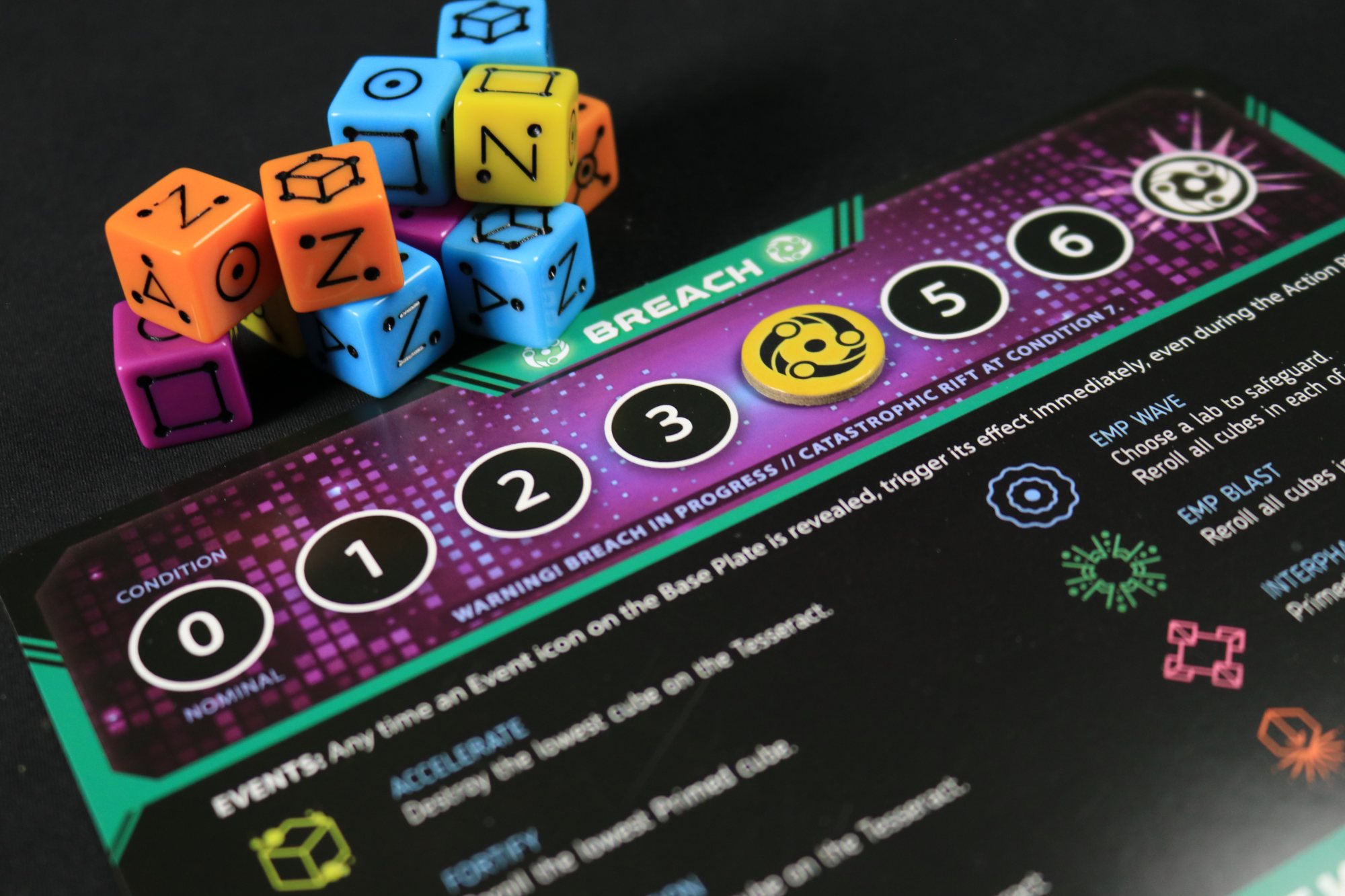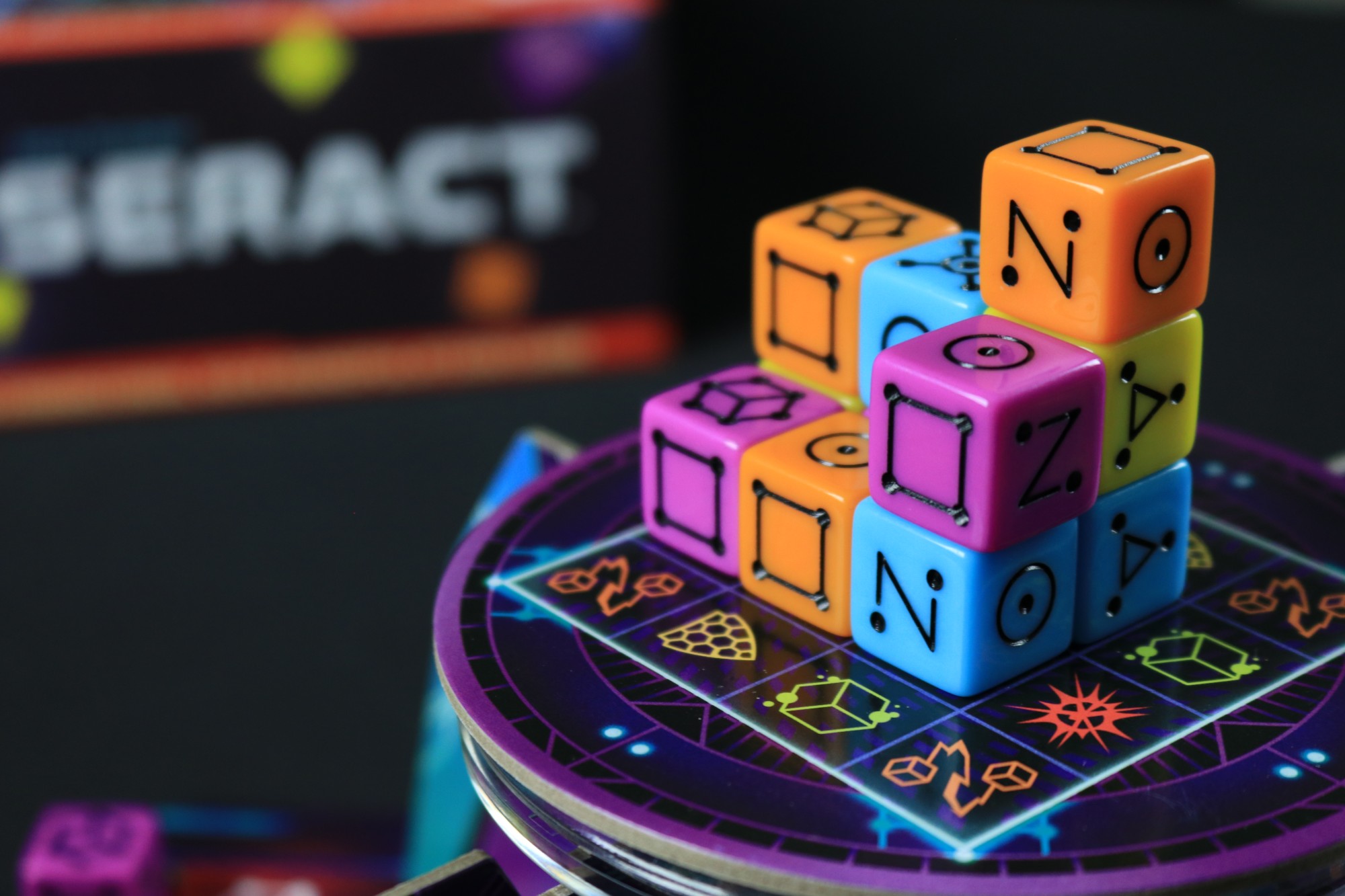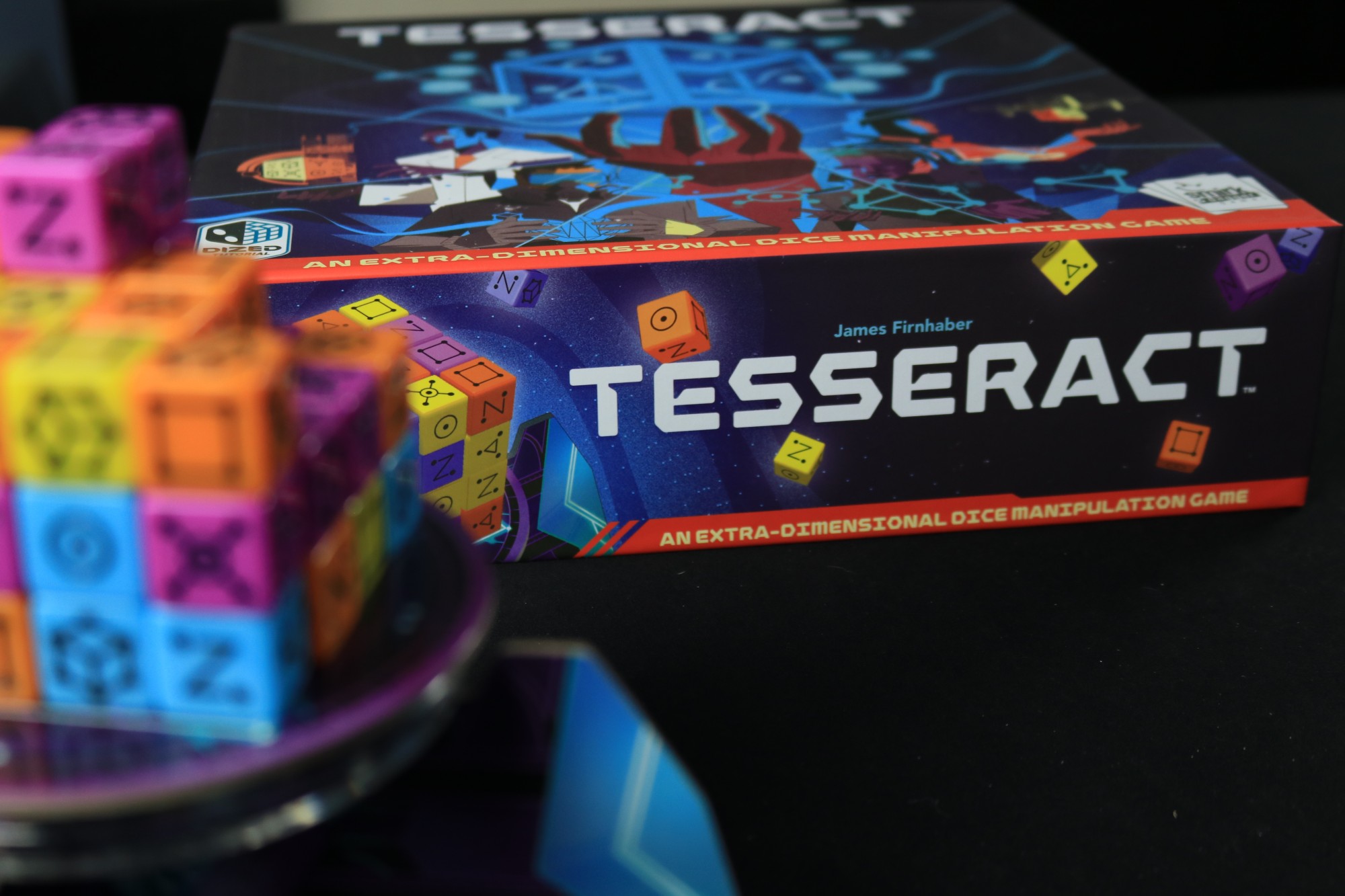Can your team deconstruct and find the secrets that are contained in the alien artifact known as the Tesseract? In this cooperative game from Smirk & Dagger, up to 4 players will work to shutdown this mysterious cube before the final breach is reached.
A Dicey Puzzle
Tesseract is a dice manipulation game from designer James Firnhaber. In the center of the table is a cube resting on a platform that turns to give players a 360-degree view. This cube is made of 6-sided dice in 4 different colors. Each of the die faces are laid out looking like alien markings, showing pips numbered 1 through 6.

The goal of the game is to “contain” each die color and face over a series of rounds. Players will take an action phase, spending 3 action points before a threat phase is triggered. During the threat phase, a new die or dice can trigger a breach. When the breach token reaches the 7th breach, the Tesseract destroys human existence. Sound stressful? It kind of is!

Each player has 3 action points to spend on their turn as they try to contain as many dice as they are able to. Players have lab boards where they can place removed dice from the Tesseract. By creating specific patterns in your lab, you can “contain” a die and add it to the Containment Board. As players contain more dice, new bonuses are triggered.
A Breach in the System
The threat phase happens at the end of each players turn. Here, the lowest die on the Tesseract is removed, rolled, then added to the Primed Area. This area of the board is where players need to watch for numbers that will cause a breach. If a number column receives 3 or more dice, a breach occurs, moving the end game closer. At its worst, if a Primed column receives a 6th die, two breaches occur.

Tesseract does a great job of giving players ways to mitigate these breaches. Dice in the Primed Area can be adjusted (up or down) by one pip as an action. If a die is added to the Containment Board, a die that matches in the Primed Area is removed from the game.
It was after our second loss to the game when we realized that we had to be more efficient and cleaver with our turns if we want to beat these colorful dice.

Research is Key
Players are given a research card to start the game. There are 3 levels of research cards that give players more control outside of their 3 normal actions. We found out quickly that these cards are a key to victory. Research cards extend how much can be done on a players’ turn.

In the few wins we’ve accomplished in this game, communication was a cornerstone of how we solved the puzzle. Communicating how we would set up the next players’ turn made the whole team more effective. Tesseract gives you all the actions you need to win; the difficulty comes in how you chain these actions together.
Tesseract has 8 difficulty levels, which are the round cards that sit under the cube of dice in the center of the table. Each time a column of dice empties, an event symbol is revealed which always leads to a bad result. As the icons toward the center start to be revealed, players have to be more strategic in their decision making.

My only gripe with the game is based on the possibility of having a clumsy player at the table. The central dice cube is pretty stable, but a player with less than smooth moves could disrupt the display. It’s a game that might not be kid friendly if your child is prone to knocking things over when playing games.
I’m a fan of cooperative games in general. There are a couple that I have high regard for because they really pull players together as a team. Tesseract has easily made this list. This is a cooperative game that draws people in as players get invested in the puzzle. Using your asymmetric player powers to benefit the team gives everyone a role in the solution.

Tesseract takes some of the best parts of dice manipulation games and makes it shine on the table with a really fun centerpiece that players tackle together. I know the game has made an impact when I spend hours thinking about it after each session, and Tesseract has done that more than once.
Tesseract is available at your local game store, the Smirk & Dagger webstore or online through Amazon.
This game was provided to us by the publisher for review. Read more about our review policies at One Board Family.
Highs
- Communication and planning is key
- Eight different “levels” to challenge players
- Fantastic table presence and design
- Research cards extend turns beyond 3 actions
Lows
- Sore losers will struggle with this one
- Don’t bump the Tesseract
Complexity

Time Commitment

Replayability






